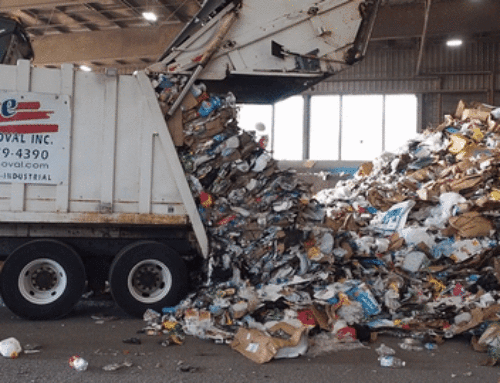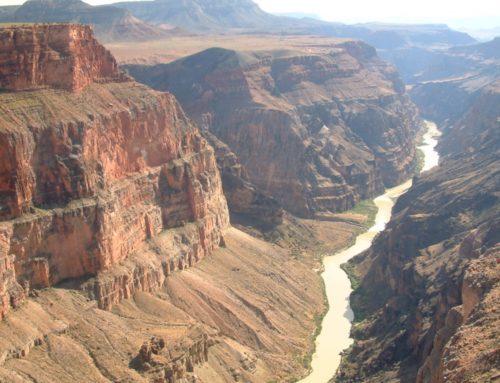Long-time urban gardener grounded in his soil and place
April 27, 2019
On the onset of the interview, as he made his way to the origins of the main water source, Forte articulated that the primary location of the water spout made it very difficult to reach his garden. Forte pointed out the area of land he had to dig a foot into the soil to create a piping system to reach his garden. In the long run, this enabled him to sustain his 120 square foot plot of land and avoid trampling over others. The process of watering the gardens beds is a simple one— spraying with a hose and nozzle. Forte’s approach of developing a sufficient and centralized DYI irrigation system seemed to have influenced the neighboring gardeners, as their water spouts were too arranged in such a way that would accommodate their growth of vegetables, herbs and fruits.
Dressed for the task of a seasoned urban gardener in his vintage blue coveralls, Mr. Forte leaned against an old log protruding from the ground finishing his sandwich and began to point-out the fruits of his labor intermingled with the highlights of his life growing into his matured years. Sprouting green beans, carrots, butter beans and corn bravely thrust their necks above the soil, while towering over the new growth were broccoli plants that reached close to two feet in height, kale, beets, collard greens, and swiss chard, “I grow what I like, when I like,” Forte expressed. He shared that there was no seasonal regime for him, but rather a method of gardening that is matched with what brings him contentment and satisfaction.
The rustic space of flourishing assorted vegetables seemed to have brought Mr. Forte peace of mind and calm over the years as he thoughtfully spoke of it as his own personal sanctuary that he toiled with his bare hands and sweat. “I don’t need to be all over Los Angeles, or here and there – “I am fine right where I am,” he said. Over the past thirty years he has given away his freshly grown produce to friends, his grown children and other family members. He prides himself on his routine of cleaning the abundance of vegetables and blanching before he puts them in freezer bags and stores. Forte proudly boast, “I’ve always got fresh vegetables to eat.” The idea of selling his produce at farmers markets was not one that appealed to Forte, he’d rather keep it simple– in order to spend “his time” the way he wants to spend it.
This particular Saturday afternoon, under the Los Angeles sun and blue sky it was busy with volunteers participating in the Earth Day Clean Up activities. Diverse groups of individuals and families of all ages strolled along the walking trails, surrounded by both the unkept weeded areas and garden plots eating the provided lunch and taking in the corner of nature on Boden and Clyde Avenue. This urban setting is tucked away a few hundred yards from the Metro La Cienega/Jefferson Expo Station in the shadows of the distant skyscrapers of downtown to the north east and the Pacific Ocean coastlines to the west. The land also serves as LA Green Grounds educational gardening classroom on the north end side of the garden, lead by Director Florence Nishida, Steven Meeks, President of West Adams Neighborhood Council, and Masha Calloway, Master Gardener whose been teaching there since its inception.
With the neighborhood of West Adams experiencing diverse change, whom many in the community are labeling the fate of gentrification, the historical Good Earth Community Garden is going through its own phase of renovations to meet the compliance regulations of LADWP. Established in 1974 under the direction of past Mayor Tom Bradley, the approximately 10,000 square foot garden underneath Los Angeles Department of Water and Power (LADWP) powerlines has gone unnoticed by many neighboring residents for years. The clean-up and renovation work in progress is that of removing tall fences, decades old dried-out fruit tree trunks, wooden structures, overgrown weeds and debris. The growers are also being asked to reduce the size of their plots to allow for the planned twenty-foot walk way on the south side of the garden.
Mr. Forte shared his frustration on this new development as he pulled out his measuring tape and asked me to assist him in checking the distance from the homeowner’s fence twenty feet into the garden grounds. He doesn’t have to worry about his harvest being affected by this change, all is clear with a foot or so of additional land in his favor. It is indicated on the Los Angeles Community Garden Council website, who now manages the urban landscape. The Los Angeles Conservation Corps or a professional tree-trimming service will have to be brought in to take out many of the older trees that are not healthy and are shading the vegetable plots.
As our interview was nearing its end, Mr. Forte and I walked past the dispersed bags of soil fertilizer, free-flowing community of butterflies and insects that come with the nurturing of land. Making our way toward the entrance area, we strolled pass the mixture of tall and short cacti, hearty green onions and garlic, more kale, collard greens, batches of rosemary, thyme, and lettuce being grown by other active families who currently have plots. Agilely grabbing a shovel, Forte made a pit-stop and begin to dig-up several green onions and hand-picked a batch of collard greens for me to take home. For a moment, I imagined I was transported to a small town back South experiencing that hospitality that only rings true by the locals, as he lifted a steel bucket to pull out a plastic bag and placed the produce in it.
We said our good-byes, as he pointed out, “these are my wheels,” a white Ford pick-up truck. And at that point, I know this would not be the last time I would be schooled on gardening, the community, or life by Mr. M.H. Forte in our community of West Adams.
Long-time urban gardener grounded in his soil and place
April 27, 2019
On the onset of the interview, as he made his way to the origins of the main water source, Forte articulated that the primary location of the water spout made it very difficult to reach his garden. Forte pointed out the area of land he had to dig a foot into the soil to create a piping system to reach his garden. In the long run, this enabled him to sustain his 120 square foot plot of land and avoid trampling over others. The process of watering the gardens beds is a simple one— spraying with a hose and nozzle. Forte’s approach of developing a sufficient and centralized DYI irrigation system seemed to have influenced the neighboring gardeners, as their water spouts were too arranged in such a way that would accommodate their growth of vegetables, herbs and fruits.
Dressed for the task of a seasoned urban gardener in his vintage blue coveralls, Mr. Forte leaned against an old log protruding from the ground finishing his sandwich and began to point-out the fruits of his labor intermingled with the highlights of his life growing into his matured years. Sprouting green beans, carrots, butter beans and corn bravely thrust their necks above the soil, while towering over the new growth were broccoli plants that reached close to two feet in height, kale, beets, collard greens, and swiss chard, “I grow what I like, when I like,” Forte expressed. He shared that there was no seasonal regime for him, but rather a method of gardening that is matched with what brings him contentment and satisfaction.The rustic space of flourishing assorted vegetables seemed to have brought Mr. Forte peace of mind and calm over the years as he thoughtfully spoke of it as his own personal sanctuary that he toiled with his bare hands and sweat. “I don’t need to be all over Los Angeles, or here and there – “I am fine right where I am,” he said. Over the past thirty years he has given away his freshly grown produce to friends, his grown children and other family members. He prides himself on his routine of cleaning the abundance of vegetables and blanching before he puts them in freezer bags and stores. Forte proudly boast, “I’ve always got fresh vegetables to eat.” The idea of selling his produce at farmers markets was not one that appealed to Forte, he’d rather keep it simple– in order to spend “his time” the way he wants to spend it.
This particular Saturday afternoon, under the Los Angeles sun and blue sky it was busy with volunteers participating in the Earth Day Clean Up activities. Diverse groups of individuals and families of all ages strolled along the walking trails, surrounded by both the unkept weeded areas and garden plots eating the provided lunch and taking in the corner of nature on Boden and Clyde Avenue. This urban setting is tucked away a few hundred yards from the Metro La Cienega/Jefferson Expo Station in the shadows of the distant skyscrapers of downtown to the north east and the Pacific Ocean coastlines to the west. The land also serves as LA Green Grounds educational gardening classroom on the north end side of the garden, lead by Director Florence Nishida, Steven Meeks, President of West Adams Neighborhood Council, and Masha Calloway, Master Gardener whose been teaching there since its inception.
With the neighborhood of West Adams experiencing diverse change, whom many in the community are labeling the fate of gentrification, the historical Good Earth Community Garden is going through its own phase of renovations to meet the compliance regulations of LADWP. Established in 1974 under the direction of past Mayor Tom Bradley, the approximately 10,000 square foot garden underneath Los Angeles Department of Water and Power (LADWP) powerlines has gone unnoticed by many neighboring residents for years. The clean-up and renovation work in progress is that of removing tall fences, decades old dried-out fruit tree trunks, wooden structures, overgrown weeds and debris. The growers are also being asked to reduce the size of their plots to allow for the planned twenty-foot walk way on the south side of the garden.
Mr. Forte shared his frustration on this new development as he pulled out his measuring tape and asked me to assist him in checking the distance from the homeowner’s fence twenty feet into the garden grounds. He doesn’t have to worry about his harvest being affected by this change, all is clear with a foot or so of additional land in his favor. It is indicated on the Los Angeles Community Garden Council website, who now manages the urban landscape. The Los Angeles Conservation Corps or a professional tree-trimming service will have to be brought in to take out many of the older trees that are not healthy and are shading the vegetable plots.As our interview was nearing its end, Mr. Forte and I walked past the dispersed bags of soil fertilizer, free-flowing community of butterflies and insects that come with the nurturing of land. Making our way toward the entrance area, we strolled pass the mixture of tall and short cacti, hearty green onions and garlic, more kale, collard greens, batches of rosemary, thyme, and lettuce being grown by other active families who currently have plots. Agilely grabbing a shovel, Forte made a pit-stop and begin to dig-up several green onions and hand-picked a batch of collard greens for me to take home. For a moment, I imagined I was transported to a small town back South experiencing that hospitality that only rings true by the locals, as he lifted a steel bucket to pull out a plastic bag and placed the produce in it.
We said our good-byes, as he pointed out, “these are my wheels,” a white Ford pick-up truck. And at that point, I know this would not be the last time I would be schooled on gardening, the community, or life by Mr. M.H. Forte in our community of West Adams.




Social Contact